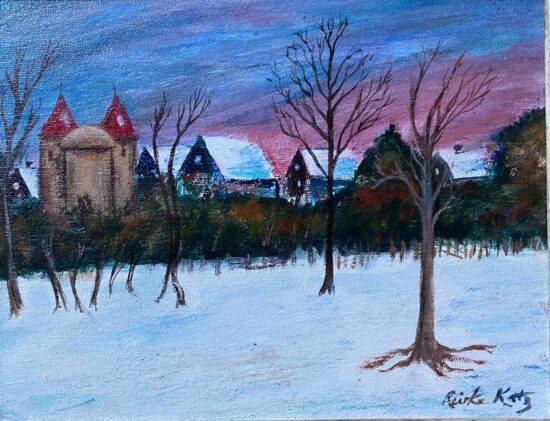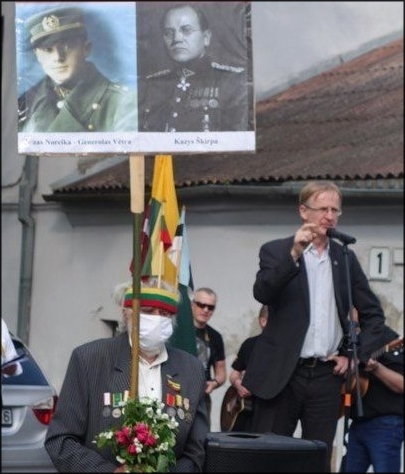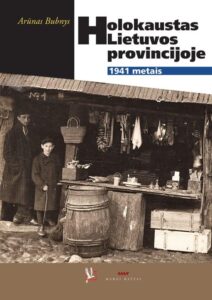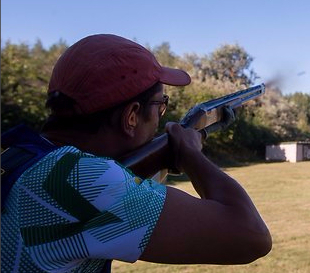◊
2025 UPDATE:
Mikháleshik’s famed Cold Case — the fatal stabbing of Yánkele, Chaim dem Shmid’s (formal name: Jacob Weinstein, son of Chaim Weinstein the blacksmith and Basye Gubersky Weinstein), in the winter of c. 1917-1918 by another Jewish teenager in town, Itske the son of Khónke der Feldsher, will forever have in the record two very different sets of Mikháleshik memories: murder vs. self-defense. As and when further audiotapes are digitized, transcribed and translated, more will be added. Many thanks to translators Lena Watson (London) and Vital Zajka (New York) for translations to date. While legal guilt or innocence will never be established in a court of law, the mystery that has stood for over a century has revolved not around the two schools of thought in the town, but about the identity (family name, family background and post-incident flight and migrations) of the knife wielder. This has now been solved by genealogist and co-editor of the Yizkor Book Ruth C. Clarke. Her two papers on the subject have been added to the Yizkor Book (July 2025).
◊
≡ ספר מיכאַלעשיק ≡
מיכאַלישקער יזכור⸗בוך
◊
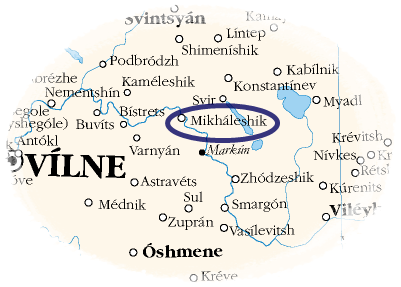
◊
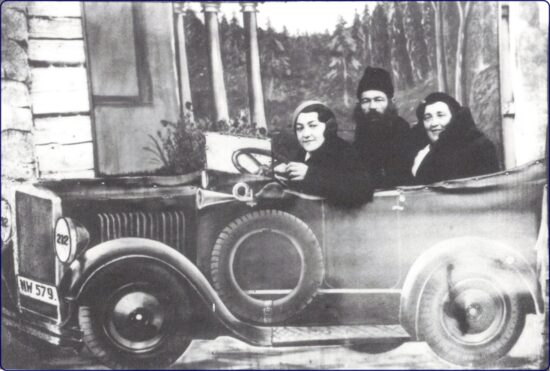
In Mikháleshik: Kháye-Rífke (left) and her parents Khóne-Vélvl and Khiyéne Rudnitzky enjoy some fun with the photographer in town for the day. Courtesy of the Esther and Edward Livingstone Family Collection (L.A.). From Mikháleshik photo section in D. Katz, Lithuanian Jewish Culture (2nd revised edition, Vilnius 2010, pp. 330-336).
◊
A WORK IN PROGRESS. FOUNDED 13 SEPT. 2022. LAST UPDATED 21 SEPT. 2025.
◊
PREFACE
CONTENTS
◊
APPENDIX 1: Prewar Archival Materials
APPENDIX 2: Postwar Publications
◊
Appreciation
A group of United States based friends of Mikháleshik Jewish history and memory have made a donation to this Yizkor Book project that has enabled the restoration and digitization of a collection of audio cassettes recorded (in Belarus, Israel, and the United States) in the 1990s with natives of Mikháleshik. The gift is in memory of
Jorek Blocher
(Urke Blacher, ±1910–1996)
who was deeply committed to the creation of a Mikháleshik yizkor book and whose extensive Yiddish writings on Mikháleshik are available via links available in the contents below. Urke worked tirelessly, and successfully, for the entire households of Joahim Iluk, and of Konstantyn Dąbrowski and Elena Dąbrowska, who risked their own and their loved ones’ lives to save him and others during the Holocaust, to be recognized as Righteous Among the Nations by Yad Vashem.
Many thanks to Ruth C. Clarke and Vital Zajka for their vast and indispensable editorial, research, and translation contributions to the Mikháleshik Yizkor Book. Thanks too to Regina Kopilevich and the late Roza Bieliauskiene for their generous contributions of materials for the project.
◊
SUPPORT AND SENDING MATERIAL
The Yizkor Book urgently needs support to continue to grow. Please consider a donation (noting that it is for the Mikháleshik Yizkor Book project). For details of US tax-deductible status for donations, and to send materials for the book, please contact us at: info@yiddishculturaldictionary.org.
Note: Mikháleshik origin family genealogy and historical ‘packets’ can be included in this Yizkor Book project if all materials are combined into a single PDF with a brief description for the Contents (emailed to: info@yiddishculturaldictionary.org). Thank you.
◊
Preface
After the death of my father Menke Katz in 1991, I embarked on a project to encourage the last survivors of Mikháleshik to write new memoirs and to sit for recorded audiotaped interviews. Mikháleshik, where Menke’s mother Badonna Gubersky (Badáne) was born and where her family lived for centuries was where Menke spent a vital part of his childhood, during World War I. Amidst the suffering of war, he was enchanted by its kabbalists, beggars and dreamers, which contrasted with the much larger county-seat town, Svintsyán (Švenčionys), where he was born. Mikháleshik is variously spelled Michalishek, Michaleshik, Michailishok and more, today: Mi(c)halishki, Belarus, and in the interwar period, in Poland, Michaliszki. The townlet is a focus of many poems in his eighteen books of poetry, nine in Yiddish and nine in English (a compilation of poems on Mikháleshik is in progress). He also published memoirs and historical work (in Yiddish and English) on language, folklore and watchmaking in the town, a book of children’s stories from the town (in English), and autobiographical memoirs.
The plan was to gather the written memoirs and (transcribed) recorded interviews for a planned Yízker Bukh (Yizkor Book, book commemorating a destroyed East European Jewish town). The project never came to fruition, alas. I take personal responsibility for that. Departure from Oxford and relocation to Lithuania (with a year at Yale in New Haven along the way) took their toll, along with my failure to find support for an actual book. Moreover, various commitments of sponsorship, as can happen, never materialized.
Nevertheless, those peregrinations enabled me to seek out new informants, during trips to Israel (including several specifically for locating and taping survivors from the town and also from the region), and also in the New Haven area, where my own dearly loved Holocaust-survivor cousins from Mikháleshik all lived. They were the three children of near-legendary Watchmaker of Mikháleshik (and Holocaust survivor) Avremke (Abraham) Gubersky: Gershke (Gershon Perecman), Blumke (Blanche Kusovitsky) and Frumke (Frances Greenberg, the youngest, and in her own playful way, the most Mikhálishkean of all). Among the inspirational people they introduced me to in 1991, after my first visit to Mikháleshik (winter 1990-1991), was Berke (Boris) Klor. Berke had spent decades on his map reconstructing where every Jewish family lived. See his entry in the Contents for the complete map. He then spent years fulfilling my own request that where possible he add in contrasting-color ink the names of the families who had previously lived in each house, before or during the First World War, i.e. the Mikháleshik of my father’s books and tales, and ipso facto, adding a generation or two more of historic depth. Berke Klor introduced me (by letter) to Fayvl Yavitsh Alvin (Philip Alwin) of Glenview, Illinois, whose many written memoirs, sent over the subsequent years, would themselves make for a fine Yiddish book. Berke also took me to meet Urke Blacher (Jorek Blocher) who sat for hours of taped interviews and sent in Mikháleshik memoirs for years. The plan is for all the written memoirs to be scanned and the audiotapes digitized for linking on these pages.
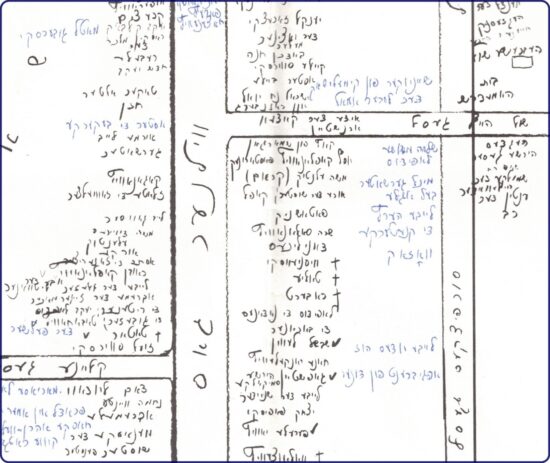
Detail from Berke Klor’s map. Click (twice) on image for enlargement.
Now, at the wise suggestion of my friend and colleague, the master genealogist and guide Regina Kopilevich in Vilnius, I shall be looking to assemble all these materials online. First, the written memoirs that people sent me. Then there are the videos, starting with Avremke Reyn (Rein) in Mikháleshik (Dec. 1990), and dozens of hours of tapes (among hundreds of hours for all of Belarus including the Mikháleshik area, still undigitized in the LYVA project). [Update of 31 Dec. 2023: most Mikháleshik tapes were digitized in 2023 thanks to a grant in memory of Urke Blacher (see acknowledgments above]. Contributions are urgently required to preserve these unique materials from further deterioration and loss. In addition, this project lists the extant published sources, which in recent years include a chapter on the town in a major book by former Obama speechwriter Adam P. Frankel, a grandson of Gershke Gubersky (Gershon Perecman), and great grandson of Avremke Gubersky. To be sure his treatment is controversial, causing pain to some families of survivors who felt the essence, culture and value of the town’s Jews, and their slaughter, were all being mulched and instrumentalized to “supposedly explain” postwar aberrant American Jewish behavior decades later and personal family issues, with little respect for the annihilated Jewish population of Mikháleshik. Nevertheless, he helped put Mikháleshik on the proverbial map, and succeeded in raising awareness on a number of contemporary issues.
The overriding goal is to save (and bring together) primarily the materials in danger of loss to posterity: the taped audio interviews (where digitization awaits funding support) and the manuscripts (where digitization slowly proceeds at no cost via the wonders of our times). In both instances (Yiddish tapes and Yiddish memoirs), this project is limited to rescue and posting, free and without log-in, for the study of future generations. In other words: as unedited, unadorned raw material in the original Lithuanian Yiddish of these wonderful people, all of whom have now passed away. It must remain for others to organize keying in of manuscripts, production of transcripts of tapes, translations, select excerpts, indexes, subtitles, and so forth — maybe one day even the hard covered book in Yiddish and other languages that these last survivors dreamt of for the town they so loved and were so proud of.
In modern Jewish culture, Mikháleshik figures prominently in the background or life of, among others, the Vilna-based founder of modern Hebrew poetry, Ódom Ha-Kóyhen (Adam Ha-Kohen, where “Adam” is an acronym in which “M” stands for: Mikhálishker); the rabbinic author Rabbi Shabse Faynberg (Shabbethai Feinberg); Yiddish and Hebrew author Abba Gordin; Yiddish and English poet Menke Katz; Yiddish author S. D. Levine. The last “king of Yiddish poetry,” my close friend Avrom Sutskever never failed to mention that though born in Smargón to the south, he was the grandson of Shabse Faynberg, and therefore a Mikhálishker éynikl: a grandson of Mikháleshik.
My deepest gratitude to all those who provided the materials for this collection, and also to the folks of both the near and unseen future who might enable the subsequent stages of the project’s development.
◊
C O N T E N T S
◊
by Fayvl Yavitsh Alvin (Philip Alwin)
◊
Introduction
Map of Mikháleshik and Listing of its Jewish People by Berke Klor (Boris Klor). English version of the map (Courtesy of Ellie Roden & Ruth C. Clarke). Note: For decades after the war, Berke Klor assembled data for his hand made map of Mikháleshik, aimed at recording every Jewish family’s name(s) in each residence. When we became friends in the early 1990s, I asked him to add (in contrasting ink) the names of the families that lived there beforehand, in many cases before the First World War, i.e. in my own father’s memory (and writings). He spent years working on that “little” request.
Names of the Jews of Mikháleshik, compiled by Esther Livingston with the help of other survivors (acknowledging Berke Klor’s map as the major source). Though overwhelmingly congruent, the three versions display minor but significant variations. At USHMM. Courtesy of Ellie Roden & Ruth C. Clarke.
1926 Polish Register of the Citizens of Mikháleshik (LCVA 55/10/679/531-669ap, in Lithuania Central State Archives). Courtesy of Regina Kopilevich, submitted by Ruth C. Clarke.
From the 1926 Register: Index (alphabetized) of the Jewish names included (LCVA).
Citations of Mikháleshik residents in the Lithuanian Central State Archives (LCVA). Compiled by Regina Kopilevich.
A Guided Tour of Mikháleshik on Video (Part I); Part II; by Avremke Reyn (Abraham Rein) [two youtube videos]. See Ríve Reyn’s short biography of A. Rein.
My Hometown Mikháleshik by S.D. Levine (18 pp.). English translation. By Vital Zajka, annotated by Ruth C. Clarke.
Our Town Mikháleshik by Esther Katz Livingstone. Courtesy Ruth C. Clarke.
Jewish Heroes of Mikháleshik by Fayvl Yavitsh Alvin (Philip Alwin) (12 pp.).
◊
Autobiographical Writings
Urke Blacher (Jorek Blocher) (30 pp); English (translated by Vital Zajka, annotated by Ruth C. Clarke). Note 1: Hours of audiotape from 1991 of interviews with Mr. Blacher about his native town were located in Sept. 2022. These have been restored and digitized thanks to the generosity of a group of friends of Urke Blacher in the United States. Note 2: See also Jorek Blocher papers and his documents and diary at EHRI. See also Urke Blacher papers at the United States Holocaust Memorial Museum.
Abba Gordin (selections from his 1958 autobiography) (Buenos Aires, 1958)
Menke Katz (in English) (22 pp.). Note: see also Dovid Katz’s biography.
S. D. Levine (from his 1971 autobiography) (18 pp.). English (translated by Vital Zajka, annotated by Ruth C. Clarke).
◊
Memories of Mikháleshik
Memories of my Childhood Sins in Mikháleshik by Fayvl Yavitsh Alvin (Philip Alwin) (12 pp.)
‘Gypsy Woman’ of Mikháleshik by Fayvl Yavitsh Alvin (Philip Alwin) (31 pp.)
Personalities of Mikháleshik by Fayvl Yavitsh Alvin (Philip Alwin) (5 pp.)
More Personalities of Mikháleshik by Fayvl Yavitsh Alvin (Philip Alwin) (6 pp.)
The Tale of Yutke-Mikhes Gershater by Urke Blacher (Jorek Blocher) (4 pp.). English (translated by Vital Zajka, annotated by Ruth C. Clarke).
The Wedding of Minka Grodzienski and Avrémele from Varnyán: How the Best Man Cost the Groom Most of the Dowry by Urke Blacher (Jorek Blacher) (6 pp.). English (translated by Vital Zajka, annotated by Ruth C. Clarke).
Memories by Gershke Gubersky (Gershon Perecman) (video). Note 1: See also Gershon Perecman Papers and oral history interview at UHMMM; Dovid Katz’s tribute on his death.
Gubersky Family Branches by Tanke Gubersky (Tania/Tauba Gubieska) (8 pp.)
◊
Mikháleshik in Menke Katz’s Works
On Watchmaking in Mikháleshik (in Yiddish) (15 pp.).
◊
Mikháleshik’s Cold Case:
MURDER OF YÁNKELE (JACOB WEINSTEIN), SON OF CHAIM THE BLACKSMITH, BY ANOTHER JEWISH TEENAGER, ITSKE SON OF KHÓNKE THE DOCTOR, OVER A GIRL’S AFFECTIONS
One set of facts and two opposing narratives
The agreed facts: Itske stabbed Yánkele in the chest on a winter’s Friday evening in front of many witnesses on the main street as Mikháleshik’s Jews were heading for the synagogue. The murderer knew from his father (the village doctor) where the heart was, and he sharpened his knife at the smithy of the victim’s father (Chaim the village blacksmith). They brought the mortally injured boy to the murderer’s father, the only doctor in town, who tried but failed to save him. The doctor’s entire family escaped overnight never to be heard from again in Mikháleshik, but numerous reports claim that the murderer became a heart specialist in California. While the eyewitnesses all agree on the event’s details, there are numerous versions about the name of the girl over whom the two teenagers became rivals. And, as evident from the contrastive texts below there is disagreement about each boy’s role in their dissonance.
The Murder of our Cousin Yánkele (by a Jewish Teenager) by Menke Katz (pp. 4-6) (English translation). Menke Katz’s later version prepared for publication and published posthumously (pp. 30-31) (English translation). Note 1: Eltshik lived in Svintsyán, not Mikháleshik; he was buried in Mikháleshik, at which point Menke remained there for several years, during World War I; Note 2: Murder of Yánkele: Memoirs, recorded interviews, and perhaps surprisingly, Christian witness statements recorded among the oldest residents in 1990-1991, provide a wealth of material on the murder of young Yánkele (Jacob) Weinstein, son of Chaim der Shmid (Chaim Weinstein) and Báshe Gubersky Weinstein (she was the sister of Aaron-Velvl Gubersky). All versions agree that it was a Friday night winter knifing over a girl (1917? 1918?) but as in any shtetl, two principal versions developed (and no two versions agree on the name of the teenaged girl over which the deadly altercation occurred), and we are fortunate to have the witness recordings and these two written memoirs now included herein: this one by Menke Katz and the memoir (see just below in the Contents) by Fayvl Alvin (Philip Alwin), from the viewpoint of Itske the knife wielder (son of Hirshe-Khone the village feldsher or medic) which presents for the jury of history a robust self-defense scenario. Another version by Menke is in a published memoir (pp. 30-31). The detailed witness accounts audio-recorded in Mikháleshik, Israel and the United States will be added to this project as soon as resources enable digitization of the old and deteriorating cassettes. The killer eventually made it to California. Yánkele’s brothers who migrated to New Jersey tried for decades (in vain) to find him.
Memories of Urke Blacher (Jorek Blocher) concerning the death of Yánkele. Audiotape transcribed and translated by Vital Zajka. English translation annotated and prepared for publication by Ruth C. Clarke.
Mystery solved: identity, surname, and subsequent migrations of the family of the knife-wielder: Ruth C. Clarke’s genealogical research solves the mystery of the family name, and subsequent history and emigration of the family of Khónke (Hírshe-Khóne) der Feldsher and his son Itske. Ruth C. Clarke’s two papers on the subject (updates to June 2025): (1) Khónke der Feldsher; (2) Solving the Mystery of Khónke der Feldsher.
◊
On the Town’s Yiddish Dialect
◊
Photographic Memories
Mini Mikháleshik Photo Album (from Dovid Katz’s Lithuanian Jewish Culture, Vilnius 2010) (12 pp.)
Photographic memories by Gítke Lipkovits (Tova Danushevski) (10 pp.). Note: It is hoped that in this and the entry just below, higher resolution copies of these photos will be provided by relatives or descendants enabling them to be “reunited” with the survivors’ captions and texts provided for the present Yizkor book.
◊
The Holocaust
List of Mikháleshik Holocaust victims, in Astravetskaya Pravda (Belarusian regional newspaper in Astravets, current county seat town including Mikháleshik/Michalishki), commemorative article including an (incomplete) list of the Holocaust victims and deportees (9 May 2011). Annotated translation into English (courtesy Vital Zajka and Ruth C. Clarke).
Testimony of Sarah Szalit (Shalit) Field. Submitted by her daughters Ellen (Field) Horak and Nancy (Field) Shedlaz. Foreword by Ruth C. Clarke.
Testimony of Haja (Meltzer) Weiner (Yad Vashem no. 5086540; file 12352).
Excerpts from Sholem Cholawsky, The Jews of Bielorussia During World War II (1998). Courtesy Vital Zajka.
◊
Remnants of the Jewish Cemetery
(EARLY 1990s)
Numbered map (1 p.). Note: In the early/mid 1990s, we commissioned this map from a local photographer who also photographed these surviving in-situ stones. Even then, tips of mostly-buried stones both inside and outside the demarcated territory were visible to the naked eye, underlining the fragmentary nature of this effort. Layers of moss and fungus and other impediments made much of the lettering unreadable on the photographs. Piotr Ivanov of Ignalina produced a hand-written transcription of all these numbered stones. These materials will hopefully be added here at the earliest possible time. At some subsequent point, the cemetery was “restored” in a process that included (a) erecting a fence that would preserve a minimum, allocating all outlying areas to contemporary concerns or occupiers of the territory and (b) eliminating visibility of many stones partially buried outside the fenced area.
◊
Appendix 1: Prewar Archival & Published Materials
Di Tsayt (Yiddish daily in Vilna/Wilno/Vilnius, from 1926: Tsayt), articles on Mikháleshik from Di Tsayt, 16 October 1925 and from Tsayt, 9 July 1926. Courtesy Roza Bieliauskiene (Vilnius), with thanks to Ruta Bloshtein (Mažvydas National Library of Lithuania) for providing images for the Yizkor book.
Entry in Geographical Dictionary of the Kingdom of Poland and Other Slavic Countries, (1880-1902) vol. 6, p. 296 [Słownik Geograficzny Królestwa Polskiego i innych krajów słowiańskich, vol VI, p. 196 published 1880–1902 in Warsaw by Filip Sulimierski, Bronisław Chlebowski, Władysław Walewski and others].
◊
Appendix 2: Postwar Published Sources
JewishGen online English translation of the encyclopedia article in Yad Vashem’s Pinkas Hakehillot series (online).
“Gubersky Family Reunited” (1949 article).
Dovid Katz, “Yiddish Poet Menke Katz” in Menke: The Complete Yiddish Poems (translated into English), The Smith: New York 2005), pp. xiii-cxxxiv.
Menke Katz in English: Dozens of poems on Mikháleshik in his nine English books; Autobiography; Forever and Ever and a Wednesday (children’s book of stories from Mikháleshik; The Smith, N.Y. 1980); Dovid Katz’s biography; Menke Katz’s poem Names of Michalishek in Commentary (Feb. 1959).
◊
Rivke Katz’s “Mikháleshik” (from her 1992 visit to Michalishki, Belarus)
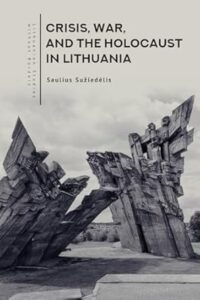 Professor emeritus Saulius Sužiedėlis of Millersville University of Pennsylvania begins this major new book by characterizing its long and productive journey. “This study is the result of years of interaction with historians, journalists, and writers from Lithuania, Latvia, Estonia, the United States, Poland, Germany, the United Kingdom, and Israel. Inspiration and encouragement emerged from discussions among the eleven-member Sub-Commission on Nazi Crimes, part of the Commission for the Evaluation of the Crimes of the Nazi and Soviet Occupation Regimes in Lithuania” (p. vii). Sužiedėlis’s opus on the Jews in Lithuania and their almost complete disappearance during the war years is a meticulously researched, coherently chronicled and impressively documented opus, tackling many themes, issues and problems with a staggering abundance of facts, figures, quotes, opinions, and anecdotes. Chunks of it read almost like an autopsy report on places and massacres rather than on an individual’s remains. I find it overall to be an exceptional, very well written, and significant contribution.
Professor emeritus Saulius Sužiedėlis of Millersville University of Pennsylvania begins this major new book by characterizing its long and productive journey. “This study is the result of years of interaction with historians, journalists, and writers from Lithuania, Latvia, Estonia, the United States, Poland, Germany, the United Kingdom, and Israel. Inspiration and encouragement emerged from discussions among the eleven-member Sub-Commission on Nazi Crimes, part of the Commission for the Evaluation of the Crimes of the Nazi and Soviet Occupation Regimes in Lithuania” (p. vii). Sužiedėlis’s opus on the Jews in Lithuania and their almost complete disappearance during the war years is a meticulously researched, coherently chronicled and impressively documented opus, tackling many themes, issues and problems with a staggering abundance of facts, figures, quotes, opinions, and anecdotes. Chunks of it read almost like an autopsy report on places and massacres rather than on an individual’s remains. I find it overall to be an exceptional, very well written, and significant contribution.


